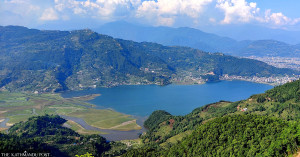Entertainment
Motorbike servicing and all there is to it
No bike, as with all machines, is a hundred percent efficient.
Ankit Tuladhar
1) The engine oil
The engine oil is what lubricates the pistons in the engine. As your engine goes through its cycles, the amount of lubricant slowly decreases, which makes it difficult for the motor to function smoothly. So changing the lubricant is inevitable. And when biking Kathmandu’s roads—pockmarked with potholes and perennially under repair—a rider ends up making constant use of the clutch, which can put a strain on the pistons. So it is advisable to change the engine oil more frequently than the company manual asks you to.
2) The air filter
This component filters the air that is sucked in by the air intake. If your air filter is clogged or dirty, the engine does not get sufficient oxygen and will not operate properly because the fuel will be inefficiently combusted. So make sure to clean your air filter at every service.
A biker whose daily commute includes dusty or off-road paths should clean the filter more often because, obviously, the more dust the filter accumulates, the earlier is has to be cleaned.
3) Tyres
Yes, the amount of air in your tyres does affect your bike’s handling and fuel consumption. If the pressure is lower than the recommended PSI (pounds per square inch), then you will notice a drop in the fuel efficiency as well. When the tyre pressure is higher than the recommended PSI, then the tyre’s rigidity will make for a bumpier, jerkier ride. This could well turn into a safety issue.
It is recommended that you check your tyre pressure from time to time. Every tyre will have a different pressure rating, so make sure you check your handbook (manual) for the recommended tyre-pressure levels for your wheels.
4) The chain and sprockets
The chain transfers the power generated from the engine to the rear tyre. If the chain is loose, then it loses some of the energy in the process of rotating, and you may notice a slight decrease in power and acceleration. Having a loose chain is also very dangerous; the chain can come off the sprockets, which could cause the wheel to jam and the bike could end up in a nasty crash. Lubricating your chain is important as it stops the metal components from rusting. So make sure the mechanic adjusts your chain and lubricates them at every service.
Some mechanics prefer to use petroleum jelly to lubricate the chain system, while some use oil. While both do the job, if the chain does not have a cover, it is recommended that you use grease during the rainy season, as oil can be washed away by the rain.
5) The cooling system
If your bike is air-cooled, then the cooling is done through a natural process—where the wind-force against a moving bike does the job of keeping the temperature down—but if your bike is liquid-cooled and heats up fairly quickly, then you might be running short on the coolant or your fan might not be working. In a liquid-cooled bike, the coolant flows through the hollow spaces of the engine and absorbs the heat. The coolant gets heated eventually and passes on the heat to the radiator, which cools it, while the coolant that had already reached the radiator earlier is pushed down and back into service to perform the cooling process. It is a continuous cycle, but when this process does not keep the heat in constant check, the cooler fan is automatically turned on upon the engine’s reaching a certain temperature limit. In case the engine heats up and exceeds the limit and the cooling system is unable to control the temperature, the engine gradually starts to lose power. So, it’s imperative that you top up your coolant and check the fans.
6) The brakes
When you take your bike in for servicing, the mechanic checks the brake lines to see if they are functioning properly. If your bike has drum brakes, it’s the brake shoes that wear out and have to be changed. If your bike has disc brakes, it’s the brake pads and the brake fluid that need to be examined. The brake fluid moves down the brake line when you pull the brake lever, which in turn pushes the brake pads together to stop or slow down the bike.
7) Carburetor/fuel injection and tuning
The carburetor/FI through moderates the level of fuel-flow into your engine. It is not necessary to tune and clean your carb/FI with every workshop visit, but it is recommended that you check it on a regular basis to ensure that it’s clean. Regular checking means that you won’t have to replace the entire part with a spare, which can make quite a dent on your wallet. As it is, there are always rumours about fuel-adulteration making the rounds, so you have no choice but to be aware of the condition of you carburetor/FI system.
8) The clutch-plate
Weaving through the heavy traffic of city roads puts a lot of pressure on the clutch-plate of your bike. Make sure you don’t ride your bike on half-clutch (holding the clutch half way while the bike is moving); if you do so, it will fry your plate. Remind the mechanic to adjust the free play of your clutch so that you don’t ride your bike using only half the clutch.
9) Washing and cleaning
Washing gets rid of grease stains and helps keep rusting and corrosion at bay.
If you see debris and impurities on the inside parts, or if you see oil leaking, then it’s time to clean and repair your fuel tank. When the fuel tank is full, the fuel can keep the tank corrosion free, but with the acute fuel shortages that transpire so often, there is no guarantee that rust will not accumulate on the upper parts of the tank’s insides. So cleaning your tank once in a while is not a bad idea either.
Final advice
As we all know, prevention is better than cure, so it is a good idea to look after your bike now than regret it later. The onus lies on you to remind the mechanics if there are any problems with the bike so that they can repair them in time. Don’t forget, motorcycle maintenance is an art in itself.
Ride safe! Happy riding!




 26.22°C Kathmandu
26.22°C Kathmandu











